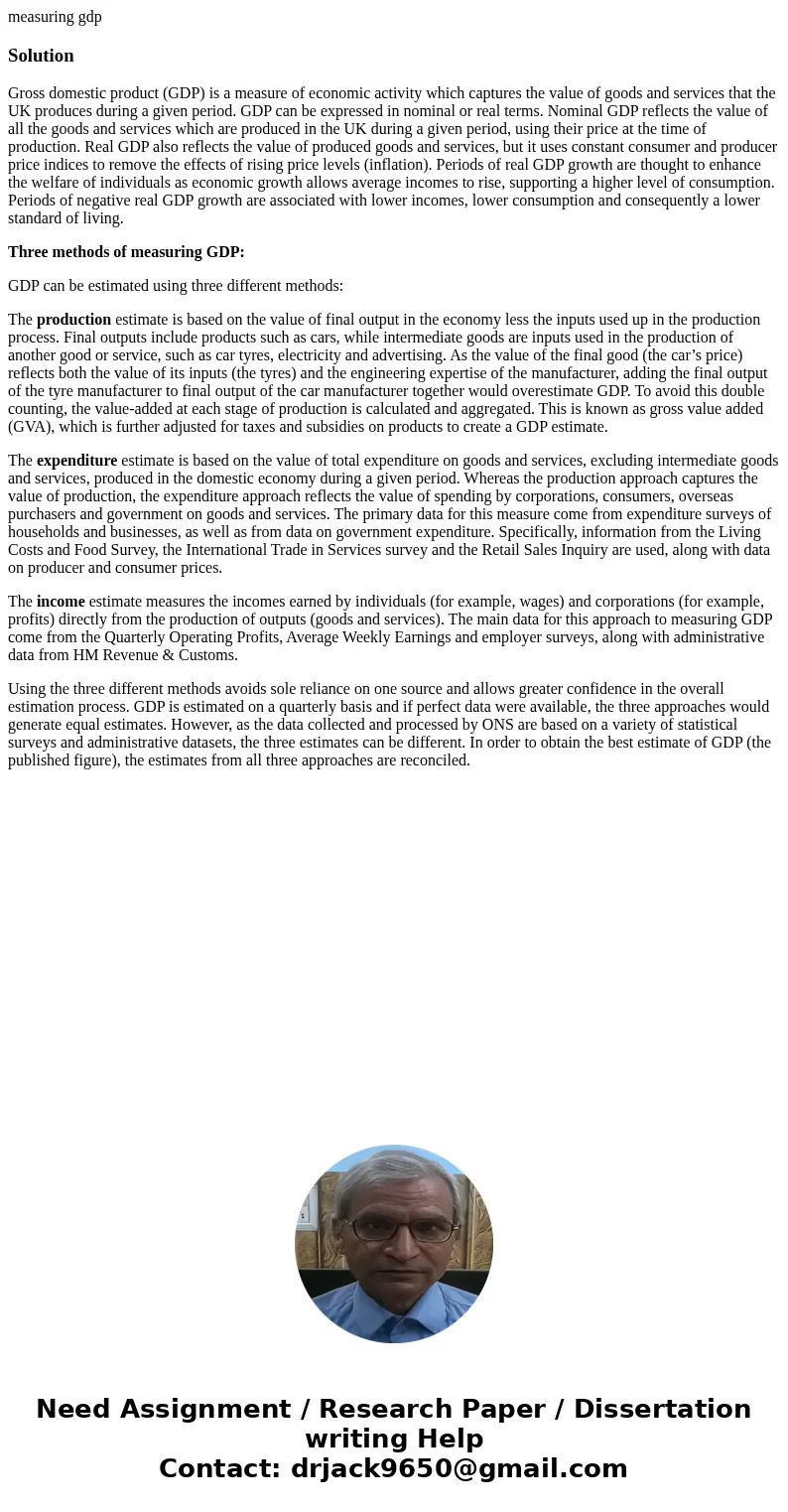measuring gdpSolutionGross domestic product GDP is a measure
measuring gdp
Solution
Gross domestic product (GDP) is a measure of economic activity which captures the value of goods and services that the UK produces during a given period. GDP can be expressed in nominal or real terms. Nominal GDP reflects the value of all the goods and services which are produced in the UK during a given period, using their price at the time of production. Real GDP also reflects the value of produced goods and services, but it uses constant consumer and producer price indices to remove the effects of rising price levels (inflation). Periods of real GDP growth are thought to enhance the welfare of individuals as economic growth allows average incomes to rise, supporting a higher level of consumption. Periods of negative real GDP growth are associated with lower incomes, lower consumption and consequently a lower standard of living.
Three methods of measuring GDP:
GDP can be estimated using three different methods:
The production estimate is based on the value of final output in the economy less the inputs used up in the production process. Final outputs include products such as cars, while intermediate goods are inputs used in the production of another good or service, such as car tyres, electricity and advertising. As the value of the final good (the car’s price) reflects both the value of its inputs (the tyres) and the engineering expertise of the manufacturer, adding the final output of the tyre manufacturer to final output of the car manufacturer together would overestimate GDP. To avoid this double counting, the value-added at each stage of production is calculated and aggregated. This is known as gross value added (GVA), which is further adjusted for taxes and subsidies on products to create a GDP estimate.
The expenditure estimate is based on the value of total expenditure on goods and services, excluding intermediate goods and services, produced in the domestic economy during a given period. Whereas the production approach captures the value of production, the expenditure approach reflects the value of spending by corporations, consumers, overseas purchasers and government on goods and services. The primary data for this measure come from expenditure surveys of households and businesses, as well as from data on government expenditure. Specifically, information from the Living Costs and Food Survey, the International Trade in Services survey and the Retail Sales Inquiry are used, along with data on producer and consumer prices.
The income estimate measures the incomes earned by individuals (for example, wages) and corporations (for example, profits) directly from the production of outputs (goods and services). The main data for this approach to measuring GDP come from the Quarterly Operating Profits, Average Weekly Earnings and employer surveys, along with administrative data from HM Revenue & Customs.
Using the three different methods avoids sole reliance on one source and allows greater confidence in the overall estimation process. GDP is estimated on a quarterly basis and if perfect data were available, the three approaches would generate equal estimates. However, as the data collected and processed by ONS are based on a variety of statistical surveys and administrative datasets, the three estimates can be different. In order to obtain the best estimate of GDP (the published figure), the estimates from all three approaches are reconciled.

 Homework Sourse
Homework Sourse